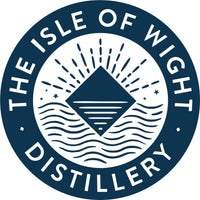A BRIEF HISTORY OF GIN, JUNIPER AND GENEVA

With World Gin Day and Martini Day come and gone, we’ve recently been celebrating a spirit very close to our hearts. With a rich history as well as the recent renaissance, it was the perfect excuse to raise a glass and show our appreciation to ‘Mother Geneva’. But there’s no reason to stop there, as gin is always best paired with sunshine and good times, plenty of which is on the horizon. We’ve selected a few interesting points in time where gin has made a mark on the lives of the British.
1585
Thanks to our alliance with the Dutch when fighting against Spain in the Anglo-Spanish war, juniper flavoured spirits were introduced to Britain. Historically (as far back as 200 AD) it was believed that juniper had medicinal powers, with the ability to cleanse the liver and kidneys. However, as we now know, mixing it with alcohol isn’t the best detox.
1689
William of Orange takes the British throne alongside Mary II and brings his love for Dutch juniper spirits (or ‘Genever’as it’s now known) with him. The royal influence ignites a new interest for the beverage and genever becomes popular, while the term “Dutch courage” is coined, with soldiers carrying hipflasks on the battleground.
1700s
The 1700s marks an interesting time for gin as it becomes somewhat of a craze. Thanks to more booze-loving monarchs, and being cheaper than beer, gin production and consumption goes through the roof. But in 1723, the popularity of gin begins to take a negative turn as the death rate starts to exceed the birth rate. The nickname ‘mother’s ruin’ is adopted due to its popularity with women, some of which who would feed their habits instead of their children. Like Judith Defour who, in 1734, murdered her 2-year-old daughter, to sell her possessions and buy gin with the profits.
Over 71 million bottles are being produced in London around this time, and in 1736 a gin act is passed in an attempt to make the trade of gin economically unviable, and quite predictably, inciting a public riot. Gin is mourned as the people hold funerals in the name of Mother Geneva, however, producers sneakily continue to produce it illegally. By 1757 the gin craze had died down when the government took the advantage of poor harvests to ban the distillation of spirits from domestic grains.
1800s
In 1870 Schweppes launch their Indian tonic water, and the first G&Ts are created. Quinine, the bitter botanical used in tonic water, was known to have protective properties against malaria and at the time the navy was travelling to areas with high cases, increasing its demand. Tonic water made it much more palatable, and because gin kept better on ships than beer, the two liquids naturally came together. But most likely in stronger measures than we would typically enjoy of an evening.
2009 and beyond
Up until fairly recently, there wasn’t much love for gin outside the navy, with the spirit’s popularity declining heavily from the 1950s, possibly due to its adverse past. However, in 2009 the first distillery licence was granted in London since 1820 after a 2 year legal battle against an ancient law that was designed to prohibit small-scale spirit makers who couldn’t pay their taxes. This resulted in a small-batch distillery in the west of the city, that when faced with harsh competition from traditional brands, took to finding success through excited bartenders in high-end venues. This paved the way for small independent distilleries to pop up and produce premium spirits and within just a few short years, craft gin was being distilled all over the country in a beautiful renaissance.
From fabulous cocktails to the classic G&T, bartenders and drinkers alike embraced the trend and we’ve been enjoying gin ever since. There’s now over 560 registered distilleries in the UK, 300 of those are in England alone, which is mammoth compared to the lowly 113 in 2009. Flavoured varieties have kept the fire burning and the botanical wonder keeps growing. Even with our beloved bars closed over the year, we’ve been quaffing G&Ts in our back gardens to the tune of £2billion. So we hope you’ll join us on these warm summer evenings in a glass or two to cheers to gin, juniper and Geneva!




